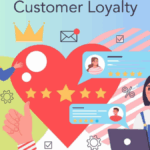Acquiring new customers is essential—but retaining them is where businesses thrive. Post-sale engagement is critical to build lasting relationships, drive repeat business, generate referrals, and maintain brand loyalty. This article explores proven strategies to keep your customers engaged long after the initial transaction.
Why Post-Sale Engagement Matters
The Cost of Customer Acquisition vs. Retention
Studies show it costs 5–7 times more to acquire a new customer than to retain an existing one. Engaged customers are more likely to:
- Make repeat purchases
- Provide positive reviews
- Refer others
- Try new products or services
Brand Loyalty Starts After the Sale
The customer journey doesn’t end with a transaction—it evolves. When customers feel supported and valued post-purchase, they are more likely to become brand advocates.
Strategies to Keep Customers Engaged After the Sale
1. Send a Personalized Thank You Message
A sincere, personalized thank-you message sets a positive tone. Whether it’s an email, a handwritten note, or a quick video, it shows appreciation and builds rapport.
Best Practices:
- Use the customer’s name
- Mention the product they purchased
- Offer a tip or next step for using the product
- Include contact info for further support
2. Provide Excellent Onboarding
Especially in tech or service industries, customer onboarding is critical. Help them get the most out of their purchase.
Key Tactics:
- Welcome emails with guides or video tutorials
- Scheduled check-ins or webinars
- A dedicated account manager or support contact
3. Deliver Ongoing Value with Educational Content
Keep customers informed with relevant, useful content.
Examples:
- How-to videos or blog posts
- Product care tips
- Industry news and trends
- Best practices for usage
By positioning your brand as a helpful resource, customers will stay connected.
4. Offer Exclusive Loyalty Programs
Customer loyalty programs incentivize repeat business and ongoing engagement.
Types of Loyalty Incentives:
- Points per purchase
- Tier-based rewards (e.g., Silver, Gold, Platinum)
- Early access to new products
- Referral bonuses
Make it easy to understand and simple to redeem.
5. Ask for Feedback and Act On It
Requesting feedback shows that you value the customer’s opinion. More importantly, it reveals opportunities to improve your offerings.
How to Gather Feedback:
- Post-purchase surveys
- Product reviews
- Net Promoter Score (NPS) polls
- Social media questions
Always acknowledge feedback and highlight any improvements made because of it.
6. Stay Connected via Email Marketing
Email remains one of the most effective customer engagement tools. Use it wisely.
Types of Engaging Emails:
- Product tips and tricks
- Birthday or anniversary messages
- Seasonal offers or discounts
- “We thought you’d like this” recommendations
Segment your lists to make the messages more relevant.
7. Build a Community Around Your Brand
Community breeds loyalty. Provide a space for customers to connect, share experiences, and learn.
Channels for Building Community:
- Facebook or LinkedIn groups
- User forums
- Live events or webinars
- Hashtag campaigns on Instagram or X (formerly Twitter)
Encourage participation and highlight community contributions.
8. Surprise and Delight
Unexpected perks keep customers engaged and emotionally invested in your brand.
Ideas for Surprises:
- Free gift with next order
- Personalized video shoutouts
- Discount code “just because”
- Early access to limited releases
These gestures don’t have to be expensive—just thoughtful.
9. Create a Customer Referral Program
Empower your existing customers to bring in new ones while staying connected themselves.
Essentials of a Good Referral Program:
- Simple referral process
- Attractive rewards for both referrer and referee
- Easy tracking and redemption
Referrals often result in more loyal, higher-value customers.
10. Keep Evolving Your Product or Service
Customers stay interested in brands that innovate and listen. If your product improves over time or expands, they have a reason to return.
Ways to Demonstrate Innovation:
- Product updates or upgrades
- Add-on services
- New feature launches
- Customer-inspired improvements
Keep customers in the loop with newsletters, blog updates, or sneak previews.
Industry-Specific Post-Sale Engagement Tactics
For E-commerce Brands
- Include product care instructions in the package
- Invite customers to share unboxing experiences online
- Offer subscription models for recurring purchases
For SaaS Companies
- Implement in-app messaging to guide users
- Regularly update help docs and tutorial videos
- Host Q&A or training webinars
For Service-Based Businesses
- Schedule regular check-ins or follow-up calls
- Send case studies of similar successful outcomes
- Offer free consultations or diagnostics
Measuring Post-Sale Engagement
Tracking the effectiveness of your post-sale efforts helps fine-tune your strategy.
Key Engagement Metrics:
- Customer Retention Rate (CRR)
- Repeat Purchase Rate
- Email Open and Click-Through Rates
- Net Promoter Score (NPS)
- Customer Lifetime Value (CLV)
Use CRM tools and analytics dashboards to monitor trends and behavior.
Tools and Technologies to Support Engagement
Recommended Tools:
- Email Platforms: Mailchimp, Klaviyo, Constant Contact
- CRM Systems: HubSpot, Salesforce, Zoho
- Survey Tools: SurveyMonkey, Typeform, Google Forms
- Loyalty Platforms: Smile.io, LoyaltyLion, Yotpo
- Community Tools: Facebook Groups, Discord, Circle
Investing in the right tools helps automate engagement while keeping it personal.
Avoiding Common Post-Sale Mistakes
Mistake 1: Going Silent After the Sale
This creates the perception that you only cared about the money.
Mistake 2: Overloading with Promotions
Customers want value—not constant sales pitches.
Mistake 3: Ignoring Complaints or Feedback
This damages trust and discourages repeat business.
Mistake 4: Making Loyalty Programs Complicated
Simplicity leads to higher participation rates.
Case Studies: Real Brands Doing It Right
Apple
Apple keeps customers engaged through seamless device ecosystems, regular software updates, and personalized support at the Genius Bar.
Amazon
Amazon Prime offers exclusive access to deals, streaming, fast delivery, and more, ensuring long-term loyalty beyond individual purchases.
Sephora
Sephora’s Beauty Insider loyalty program offers tiered benefits, free samples, and exclusive access to keep beauty lovers engaged year-round.
Conclusion
Customer engagement doesn’t stop at the sale—it begins there. Whether you’re a startup or an established business, building strong post-sale relationships is the key to long-term growth and success. By combining personalization, support, education, and rewards, you can turn a one-time buyer into a lifetime fan.
Keep your customers happy, informed, and involved—and they’ll keep coming back.
FAQs
Q1: Why is post-sale engagement important?
Post-sale engagement helps businesses build loyalty, encourage repeat purchases, and increase customer lifetime value while reducing churn.
Q2: What are the best tools for customer engagement?
Email platforms like Mailchimp, CRM systems like HubSpot, and loyalty tools like Smile.io are effective for maintaining ongoing communication and engagement.
Q3: How often should I follow up with customers after a purchase?
Follow-ups should be timed strategically—send a thank-you immediately, offer tips within a week, and follow up monthly with relevant updates or offers.
Q4: What is a good example of post-sale educational content?
How-to guides, care instructions, or video tutorials showing how to maximize product usage are excellent educational content types.
Q5: Can social media help with post-sale engagement?
Absolutely. Social media allows brands to interact with customers, share updates, spotlight user-generated content, and build communities that foster long-term loyalty.



